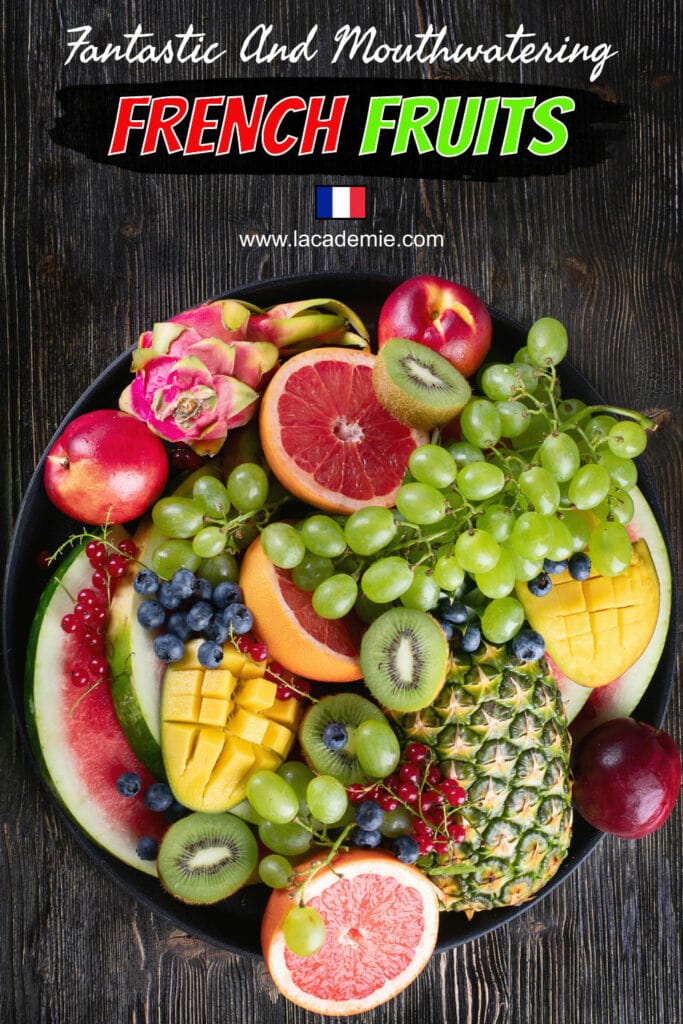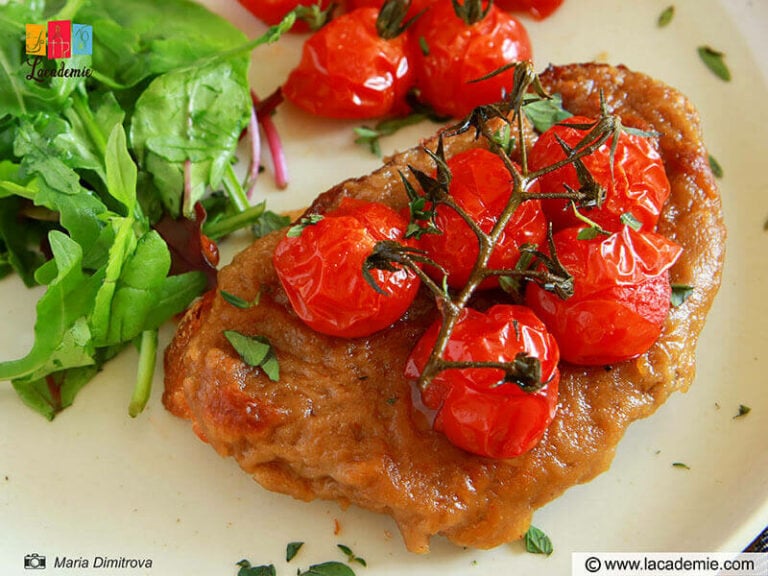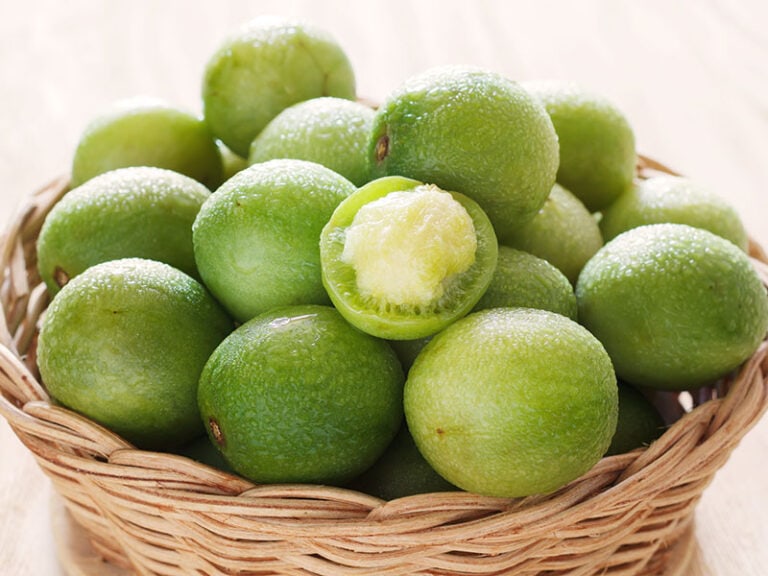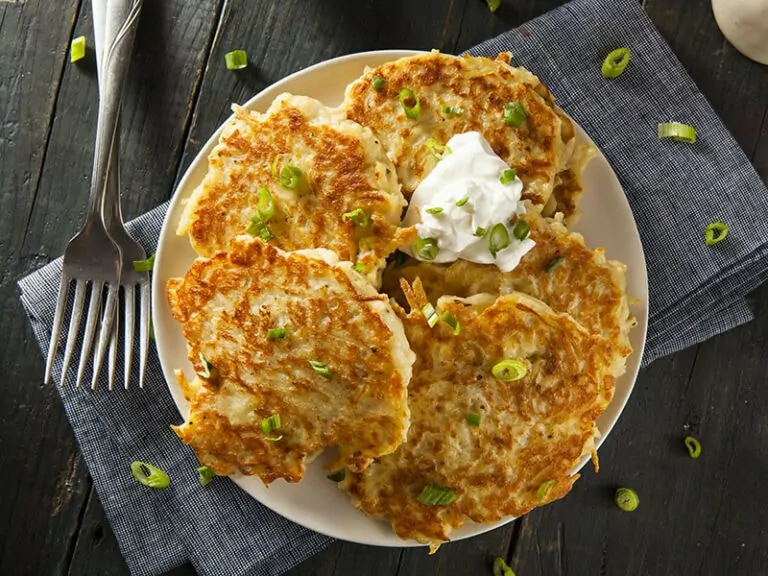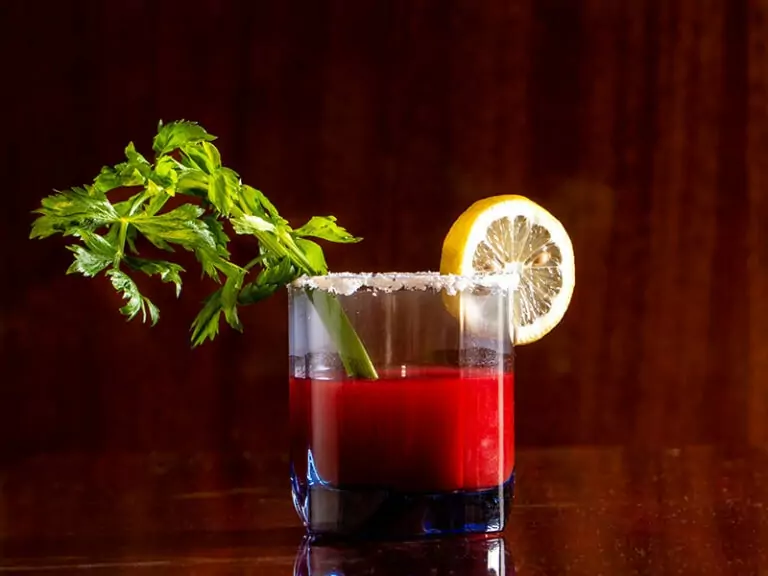Many people want to explore more about famous French fruits. If you are one of them, this post is for you because it contains all the incredible information about the fantastic fruits of this European country.
Besides the helpful information about the appearance and origin of different types of fruits, this post will introduce profound knowledge, such as season, nutrients, and the common ways to consume the fruits. Therefore, please keep reading this article to find out.
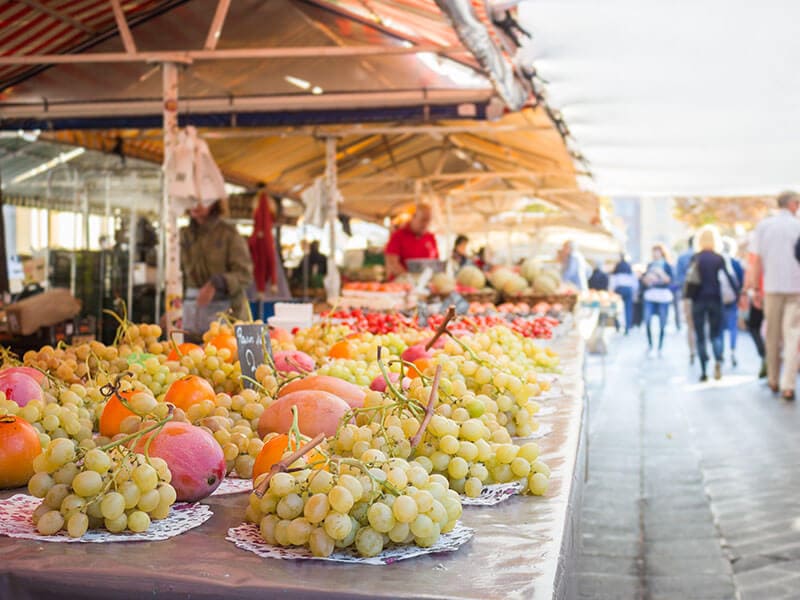
Refresh Your Mouth With Yummy Berry Fruits In France
This section will show you a list of unique French fruits belonging to the berry category. Berry includes pulpy and small fruits that do not contain a pit. However, it is possible to find many seeds or pips inside.
1. Banana – Banane
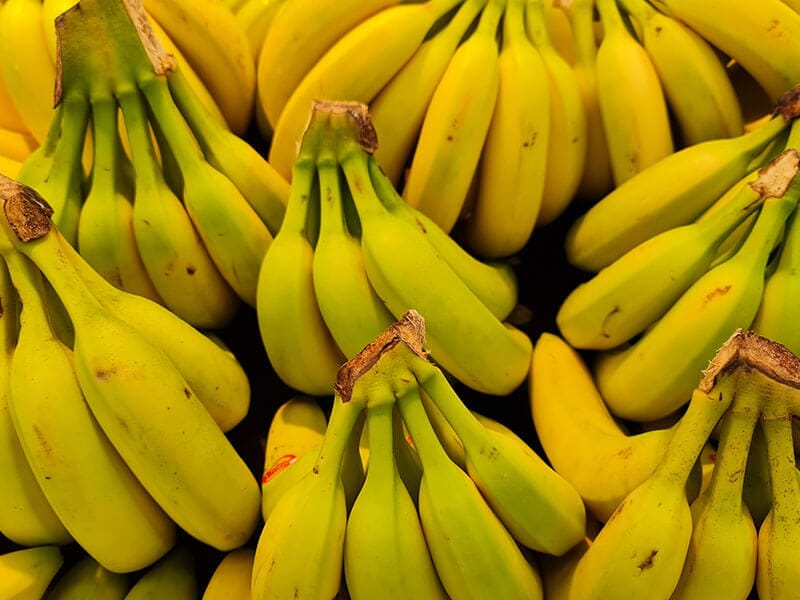
If you are looking for famous and healthy French desserts for your party, you should try bananas. This is an international fruit as it appears in every market and supermarket worldwide. Plus, the flavor of desserts made from bananas will not let you down.
A banana is a berry with a distinctive elongated shape. Depending on the different types of bananas, this fruit can have various shapes, colors, and tastes. Unripe bananas will have a firm texture, from green skin to white flesh.
And the rind will turn purple, red, or brown when mature. Especially when it is ready to eat, its flesh will become soft, creamy, and fragrant.
The creamy texture and the enchanting sweetness of bananas are suitable for making plenty of delicious French cakes, ice cream, smoothies, and other sweet desserts. In addition, you can feel a hint of characteristic citrus fruit taste from bananas.
In cuisine, people will take advantage of the crispy texture and mild taste of unripe bananas to add to curries, salads, stews, and other dishes. Fried banana is an excellent snack. Plantain is a type of banana with green skin, and it is used commonly in cooking.
Nutrients: High in calories, protein, carbs, fiber, vitamin C, A, and potassium.
Season: This fruit is available all year round in France.
How to eat: To eat a banana, you just need to peel its skin and eat the delicious flesh.
2. Kiwi – Kiwi de L’Adour
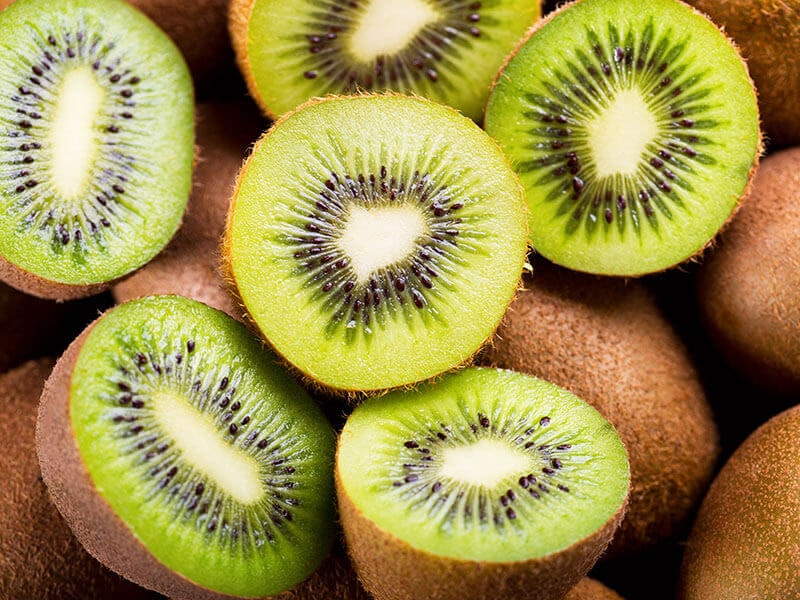
It is hard to resist the outstanding taste of kiwi. It is the fruit of vine plants, and this fruit originates in Central and Eastern China. Records about this fruit existed in the 12th century in the Song Dynasty.
In France, its cultivation is widespread in the Pyrenees Atlantiques area. Kiwi is a healthy fruit with many valuable nutrients. It often appears oval and contains thin and brown skin. You can consume the fuzzy and tart skin of this fruit.
You will fall in love with the tender texture and sweetness of the green or golden flesh. You do not need to remove the countless tiny black seeds inside. To enjoy the authentic flavor, you can eat raw kiwi. You can mix it with meat dishes or use it for decorating.
Nutrients: Dietary fiber, antioxidants, vitamin C, calcium, and potassium.
Season: This fruit is often available from November to May in France.
How to eat: It is simple to eat the whole fruit or dice it into small slices to consume quickly.
3. Grapes – Raisins
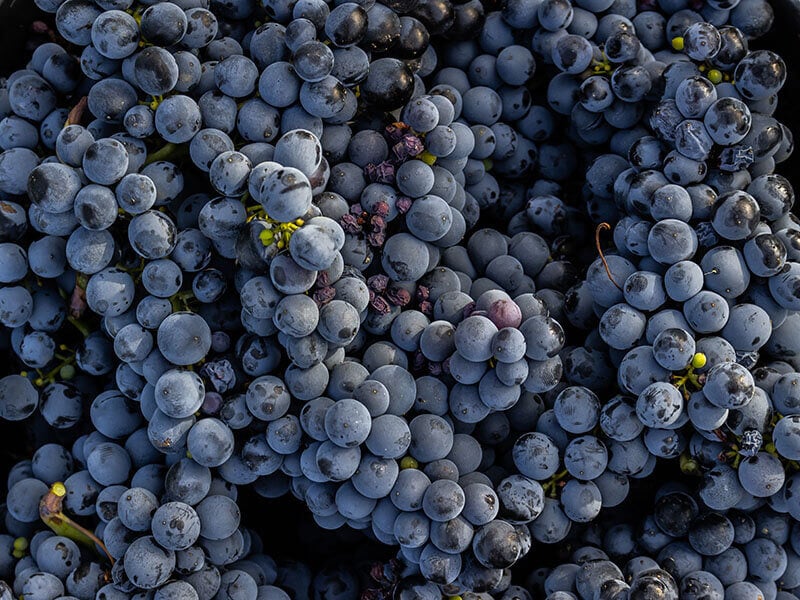
France is one of the top producers of grape wine worldwide, so this country is a source of grapes. Almost natives love to consume grapes to enjoy the fantastic taste. Although this fruit originated in Middle East Asia 6000 to 8000 years ago, it is also loved widely in France.
Grape is a small fruit in black, purple, deep blue, green, orange, or crimson shades. It has a jelly-like texture and some tiny seeds inside. The sweet-sour taste of this fruit is suitable for making wine.
The grape has been cultivated in France for a long time. There are 3 different grape types in France, including Pinot Noir, Merlot, and Cabernet Sauvignon. The Pinot Noir type originated in the Roman invasion and is the common element in yummy sparkling wine that makes for incredible French cocktails.
Merlot is popular in Bordeaux and Libourne. It will bring the characteristic red color to the wine. Cabernet Sauvignon is famous in France and worldwide. This type has the same fragrance as green peppers.
Nutrients: A source of calories, carbs, protein, fiber, copper, thiamine, and vitamin K.
Season: Its peak season is between August and October in France.
How to eat: You can consume the whole grape after washing it with water. It is better to remove its seeds while eating as they are bitter.
Check out the methods to make wine from grapes in France.
4. Avocado – Acocat
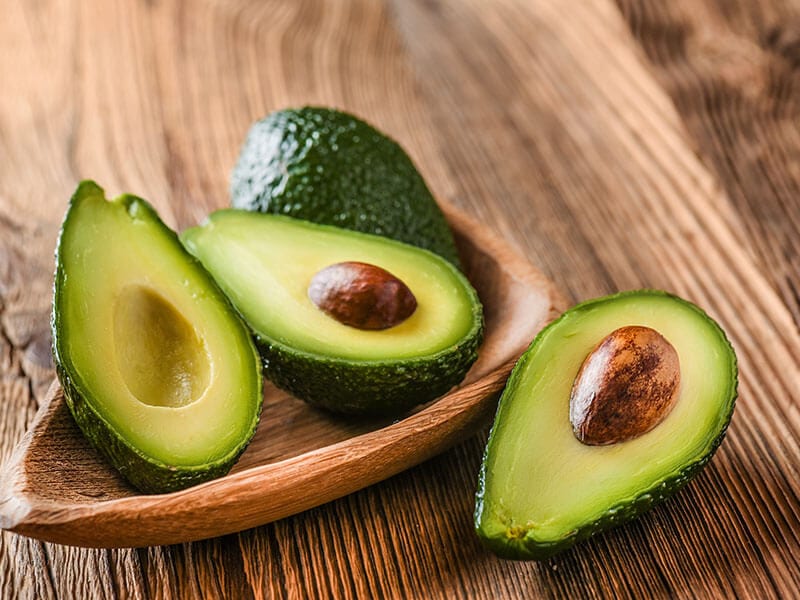
Avocado is a popular fruit in tropical countries worldwide, and it is also widespread in France. This incredible fruit is native to the highland areas of Guatemala and Mexico. Gradually, avocado cultivation occurs in many other parts of the world.
It is easy to consume various avocado varieties with many different colors and shapes. Most unripe avocados have green skin and a firm texture. The color will transfer to brown, black, or purplish when ripe. And ripe avocado will be softer.
Avocado has the same shape as egg and pear. The buttery texture of the light green flesh will make you flutter when eating. Please remember to remove the giant pit in the middle of the fruit before consuming it.
This fruit has a delicate and mild flavor, so adding avocado in many French recipes is fine. Its taste is a perfect combination of nutty, grassy, and earthy flavors. People love to combine avocado with sugar and milk to make delicious and refreshing smoothies.
Moreover, avocado’s smooth and creamy texture is an incredible choice to add to sandwiches, pizza, burgers, and other savory dishes.
Nutrients: Plenty of fiber, healthy fat, vitamin E, C, B6, magnesium, folate, and potassium.
Season: It is available from spring to autumn in France.
How to eat: The simple way to eat avocado is to slice it into 2 sections, remove the pit, and consume the flesh with a spoon.
Let’s see how to prepare fantastic food from avocado in France.
5. Watermelon – Pasteque
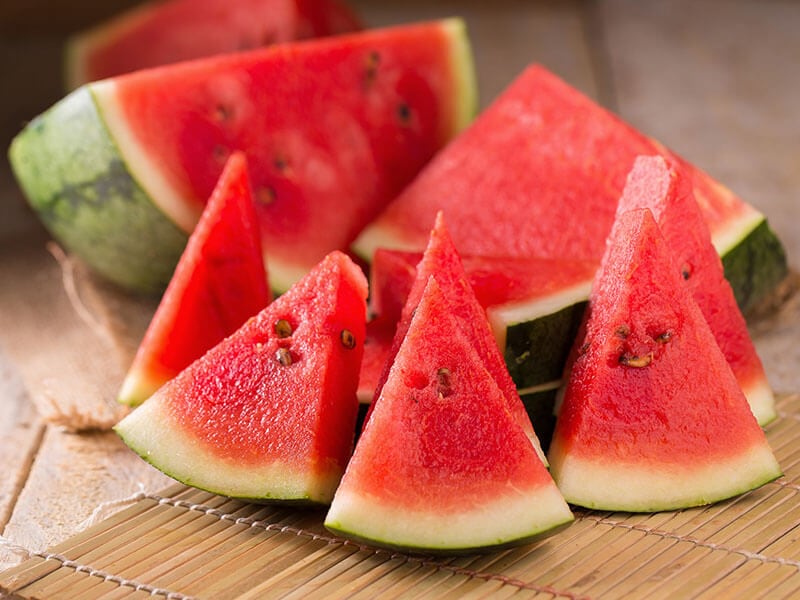
Watermelon is a perfect choice for the hot summer days in Paris or many regions of France. This fruit is a member of the Cucurbitaceae family and grows from the vine plant. There are over 1000 different watermelon species worldwide.
This fruit will thrive vigorously in tropical regions. Watermelon is a berry and is protected by a thick and dark green skin. You can notice some stripes along the rind’s surface vertically. So, this fruit looks unique and is easy to realize.
It is fantastic to enjoy a glass of watermelon juice or smoothie made from red, orange, pink, or yellow flesh. It is succulent with a high content of water. In particular, watermelon’s refreshing and sweet taste will help your mouth relax.
Watermelon has appeared in Europe since the 10th century. It was brought to the Iberian Peninsula by the Moors. Gradually, it spread to France, south European countries, and many other regions in this continent.
This fruit’s juicy texture makes it the favorite choice in creating incredible fruit juices or smoothies. Moreover, people often mix it with ice cream, milk, and other fruits. You can not forget the outstanding taste of watermelon salads.
Nutrients: High in calories, carbs, vitamin A, C, B6, sodium, and potassium.
Season: Its season runs from May to September in France.
How to eat: Dice watermelon into 2 parts and scoop the juicy flesh with a spoon.
Excellent French Fruits Belonging To Drupe Category
Drupe fruits are the options that contain only one stone in the middle. You can consult these drupe fruits in this part to have the proper ways to eat them.
6. Apricot – Un Abricot
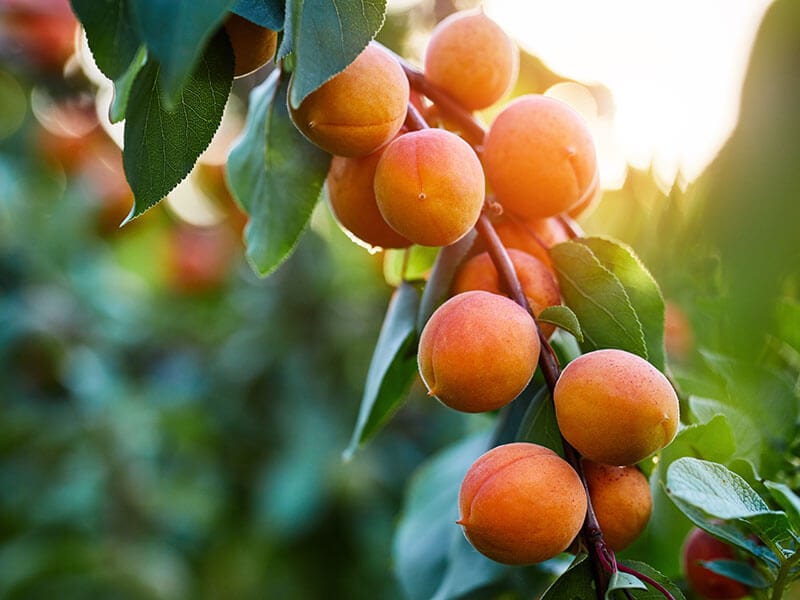
The Apricot is an iconic fruit of France, and it appears in many delicious French foods. This fantastic fruit originated in Central Asia over 5000 years ago. It is cultivated commonly in the south-eastern areas of France.
In France, almost apricots have their origin and quality labels like Label Rouge. There are many similarities between apricots and small peaches. It has dark yellow or orange skin and an inedible stone in the middle.
When touching its skin, you will love the smooth texture of its surface. The white and yellow flesh of it will be a good choice for dessert after each meal. In particular, the juiciness and crunchiness of this fruit will fascinate you.
French apricot will give a charming fragrance to your dishes. The sweetness of it will make you want to try it again. Also, a bit of sourness will leave a memorable aftertaste. Besides eating raw, you can make juices, smoothies, baked goods, and other desserts.
Nutrients: Rich in calories, carbs, fiber, vitamin C, and potassium.
Season: Its season lasts from early June to early August in France.
How to eat: Remove the rind of the apricot and eat the meat around the pit.
7. Cherry – Cerise
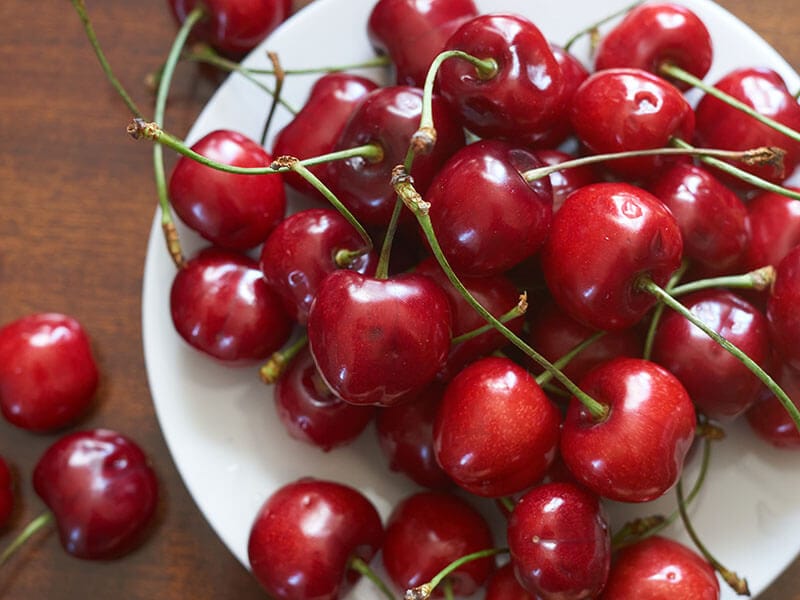
Cherry is one of the famous members of the drupe fruit category. It is loved by many people in Europe and other parts of the world. The sweet version of this fruit appears widely in European countries, western Asia, and northern Africa.
People have eaten cherries since prehistoric times. In French, cherries have existed since the 1920s in the Ceret region. Cherries look adorable in heart shape and dark red color. Sometimes, you can come across it in yellow hues or black hues.
After eating the sweet and soft flesh, a single seed will show up, and you should remove it. A bit of the acid content will bring a note of sourness to this fruit. There are multiple types of cherry, and Burlat cherries are the most famous variety in France.
Cherries contain many helpful nutrients, so people often consume raw cherries to enjoy the authentic taste. In addition, it is a common ingredient in fresh salads and is eaten with ice cream, yogurt, and cake.
Nutrients: Source of calories, protein, carbs, fiber, vitamin C, copper, manganese, and potassium.
Season: The cherry season extends from late May to July in France.
How to eat: Wash the fruit and consume the flesh around the stone.
Expand your knowledge of the health benefits of cherries.
8. Peach – Peche
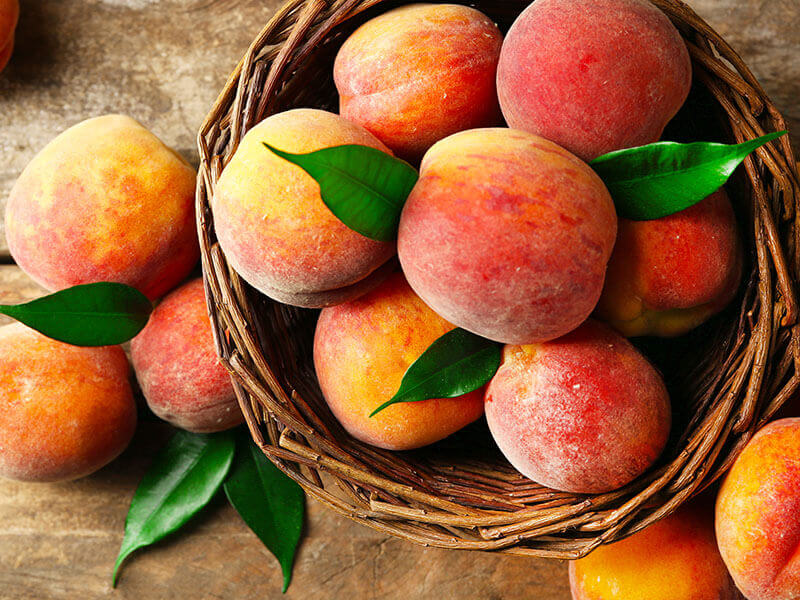
Peaches are an indispensable fruit in this list. The outstanding taste and charming aroma will fascinate you. This fruit is native to the Zhejiang province in China. Peach is in the same family as apricot, plum, cherry, and almond.
Therefore, they are similar in structure, with a single stone in the center of the fruit. This seed is covered by a thick layer of white or yellow flesh. The white version will be sweeter than the yellow one. There is a velvety layer on the surface of the smooth skin.
There are 2 different types of peach, including clingstones and freestones. The primary difference between them is the relation between the flesh and stone. The stone of clingstones will stick to the meat, which does not occur with freestones.
Besides the sweetness, you can feel a hint of the acidic tang taste from this fruit. The acidity level will depend on the ripeness level. You can consume raw peaches or add them to your favored French-style desserts, such as pies, ice cream, smoothies, and juices.
Nutrients: Calories, carbs, fiber, protein, vitamin C, and A.
Season: Its season runs from mid-June to mid-September in France.
How to eat: Remove the skin of the peach and eat the flesh from the pit. Moreover, you can cut it into two halves and remove the seed before consuming it.
9. Prune
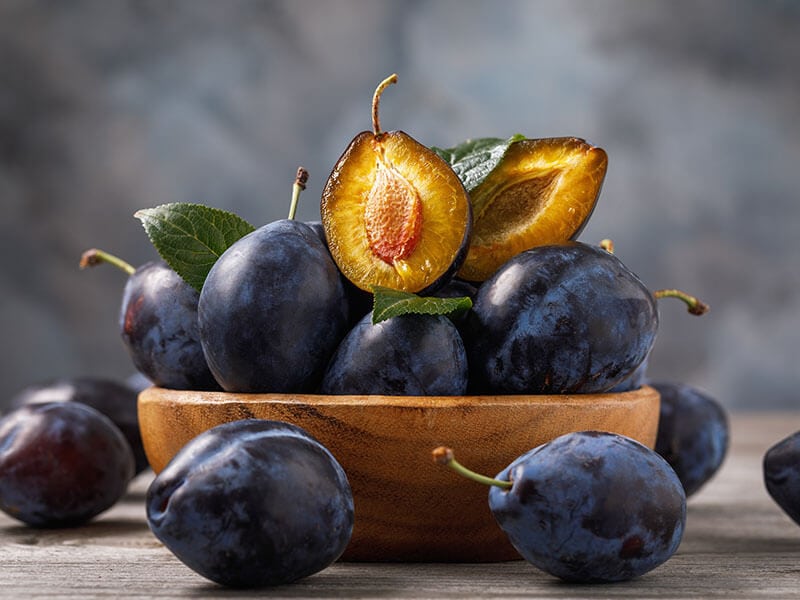
Prune is a favorite fruit of the French. It is the dried form of plum fruits. Agen prune is the most common variety in France. This fruit originates in the Aquitaine area of France. This is a long-standing fruit of France.
Prune had appeared in the 16th century after the appearance of plum in France in the 13th century. A Crusader brought plum seeds from Syria to France, and the local monks planted this fruit for the first time.
Most prunes have glossy skin and deep black color. It includes a small pit inside covered by a layer of light brown or yellow flesh. The French love to add this fruit into stews, foie gras, and roasts with pork, poultry, and game. Also, it is often mixed with cheese for desserts.
Nutrients: High in calories, carbs, fiber, vitamin A, K, B2, and B3.
Season: Mid to late August is the best time for harvesting this fruit in France.
How to eat: To consume this fruit, you need to wash it with water and eat the pulp around the seed.
10. Mirabelle Plum – Mirabelles de Lorraine
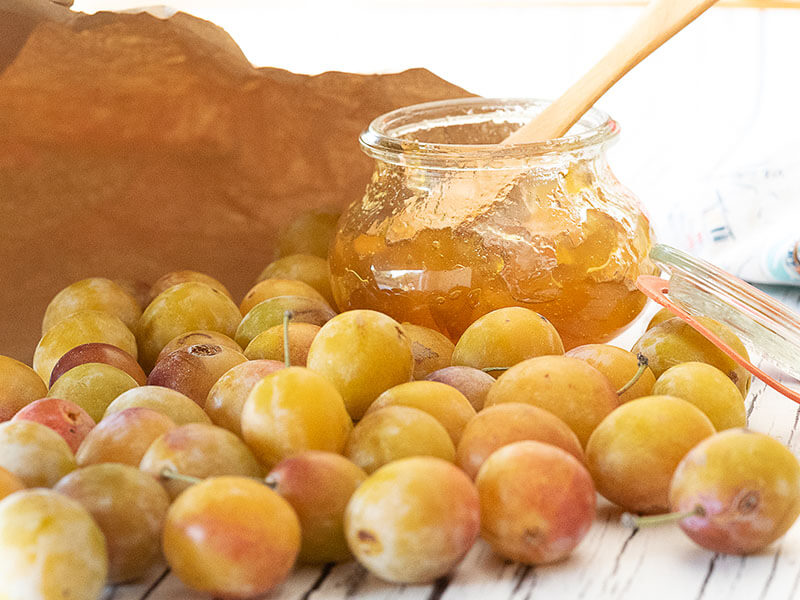
A French specialty I want to introduce in this article is Mirabelle plum. People often call it a cherry plum or mirabelle prune. This fruit grows wild in Anatolia and is an iconic fruit of the Lorraine region. About 15000 tons of Mirabelle plum are produced in this area.
Thanks to its oval shape and small size, you can realize this fruit quickly. In addition, the eye-catching deep yellow shade of this fruit is another distinctive feature of its appearance. You will fall in love with the enchanting sweetness right away.
This fruit is a common ingredient in preparing jams, juices, pies, and wine in France. Also, please feel free to consume fresh Mirabell plum. The most popular method to harvest this fruit is shaking the tree and putting a net under the tree to collect it.
There are 2 primary types of this fruit planted in Metz and Nancy. The Nancy version will be significant and sweet. Meanwhile, the Metz version is softer and smaller. Compared to the Nancy type, it will be less sweet.
This fruit has been sold in the EU as a high-quality product since 1996. Each item must have the PGI (Protected Geographical Indication) label. If you come to Metz in August, you can join the Mirabelle Festival to enjoy many delicious foods made from this fruit.
Nutrients: A source of calories, carbs, fiber, and vitamin C.
Season: Its season is often in mid-August in France.
How to eat: You can eat the flesh around the pit after rinsing or peel the skin before eating.
Discover the authentic flavor of the fantastic Mirabelle plum right now.
11. Mango – Mangue
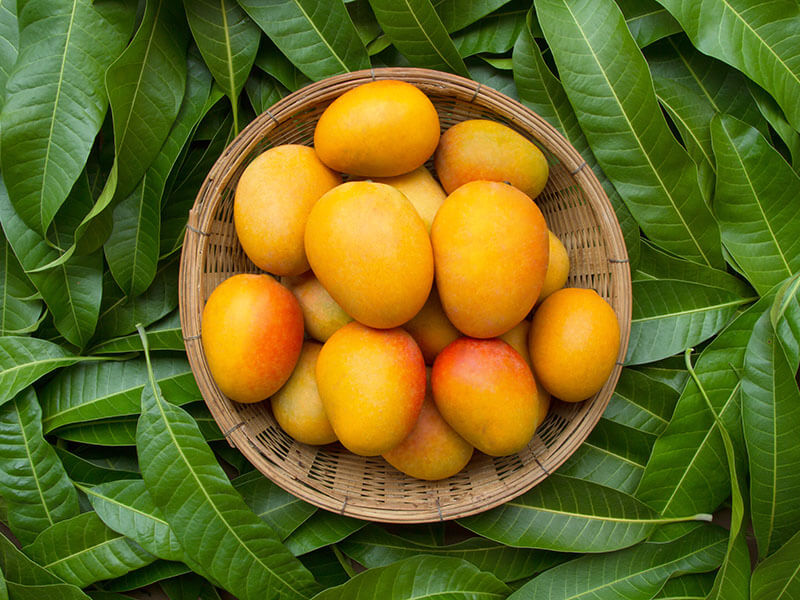
Mango is a drupe fruit and has its origin in Bangladesh, northeastern India, and northwestern Myanmar. Also, you can taste this fantastic fruit in Southeast, South Asia, and many European countries. And France is one of them.
You can purchase mango at many local markets in France, and you will feel its characteristic flavor in many delicious dishes. This fruit has 2 main types: Southeast Asian mango and Indian mango.
Moreover, you can come across several types of mango globally. They will exist in various sizes, colors, and shapes. Round, oval, and kidney are the familiar shapes of this fruit that you can see.
Its color ranges from yellow, red, orange to green. Beneath the smooth and leathery skin, there is yellow, orange, or red flesh. When biting this fruit, the juicy and creamy texture of mango will make you want to consume it again.
You cannot eat the large seed in the center, and the only thing you can do with it is buried it in the ground and take care of it to get a new mango tree. You can think of the flavor of lime when eating mango, and the sweetness will awaken your taste buds.
Nutrients: Calories, fiber, protein, vitamin A, C, B6, and potassium.
Season: Its season extends from May to September in France.
How to eat: You can cut around the seed and consume the flesh from the skin. In addition, you can peel its skin and eat the meat from the seed.
Tickle Your Taste Buds With Amazing French Citrus Fruits
Citrus fruits always leave a deep impression on my mind after consumption. It is a shortcoming not to show these citrus fruits to you. Let’s check them out right now.
12. Orange
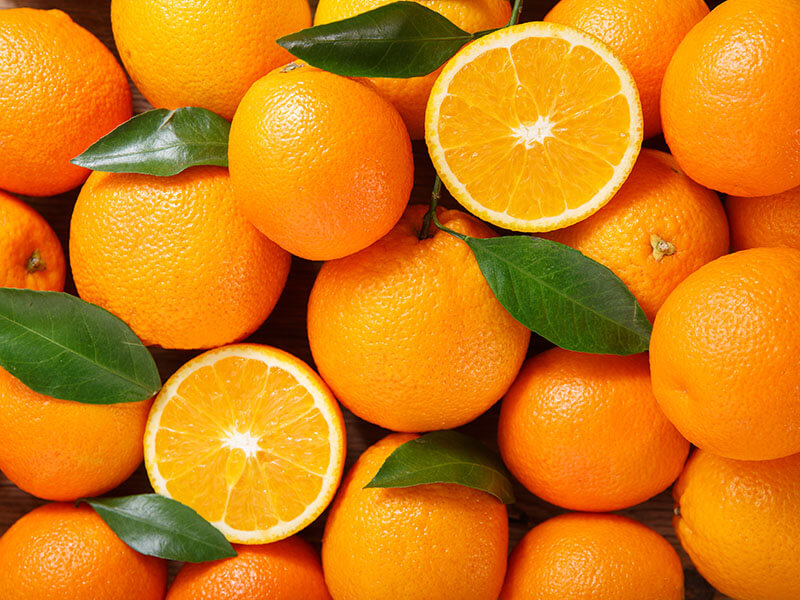
If you are searching for a fresh and yummy French drink, orange juice is an option you have to give a shot. This fruit is popular across France and the world. It belongs to the Rutaceae family and plays an essential role in French cuisine.
This delicious fruit has its origin in Southern China, Myanmar, and Northeast India. It is a versatile fruit because you can use its flesh and rind for many dishes. It is straightforward to find many different varieties of orange around the world.
This international fruit appeared in Europe (Iberian Peninsula) in the 10th century, and the Moors brought it to this continent. Typically, oranges exist in green, brown, yellow, or orange shades. You can use its rind to make jams or add it to food to bring the citrus flavor.
The most crucial part of the orange is the succulent flesh. It includes about 6 to 10 segments. And you can find bitter and inedible seeds inside, but there are some seedless versions. The distinctive citrus flavor with the sweetness and a bit of tartness will make you flutter.
To use oranges effectively, people will eat fresh oranges as a dessert. Making juice is the standard method, and it is often used in salads and many savory dishes. You can feel its taste in drinks, ice cream, and other desserts.
Nutrients: High in calories, fiber, vitamin A, C, and calcium.
Season: November is the best time for eating oranges in France.
How to eat: Discard the rind of the orange and consume the succulent flesh of this fruit. Furthermore, you can slice the orange into small slices to eat the flesh from the skin. You can cut it into 2 sections to squeeze the juice.
Follow the directions to mix orange and duck in a delicious recipe.
13. Lemon – Citron
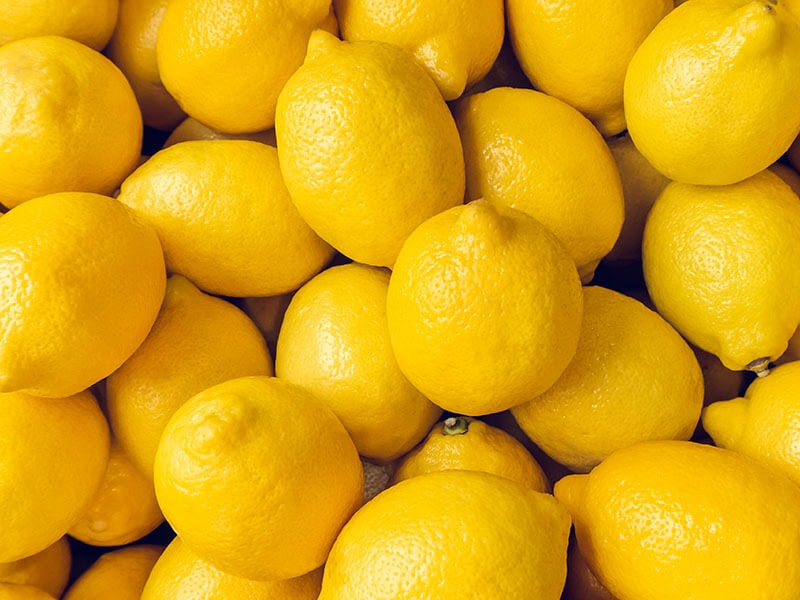
Lemon is a kind of citrus fruit I want to introduce to this list. It is a part of the Rutaceae family. Although it is derived in Northeast India, China, and Northern Myanmar, this fruit is a loved choice of many people in Europe and France.
Lemon started appearing in Europe in the 2nd century AD. The ellipsoidal shape of yellow lemons will captivate you right now. Like other citrus fruits, you will see many juicy segments beneath the aromatic rind.
Typically, lemon contains about 5 to 6 percent of citric acid, so the sourness is the prominent flavor of lemon. It is excellent to enjoy a glass of lemon juice on summer days. In addition, people also add it to drinks and foods like lemonade or lemon meringue pie.
There are many lemon types worldwide. And Menton lemon is the most famous variety in France. This type is popular in the Alpes-Maritimes area in France. This type is not bitter like ordinary lemons.
Nutrients: It contains protein, carbs, calories, fiber, and phosphorus.
Season: It is available all year round in France.
How to eat: To use lemon, you can cut it into 2 parts to squeeze its juice and use in cooking or making juice.
14. Clementine
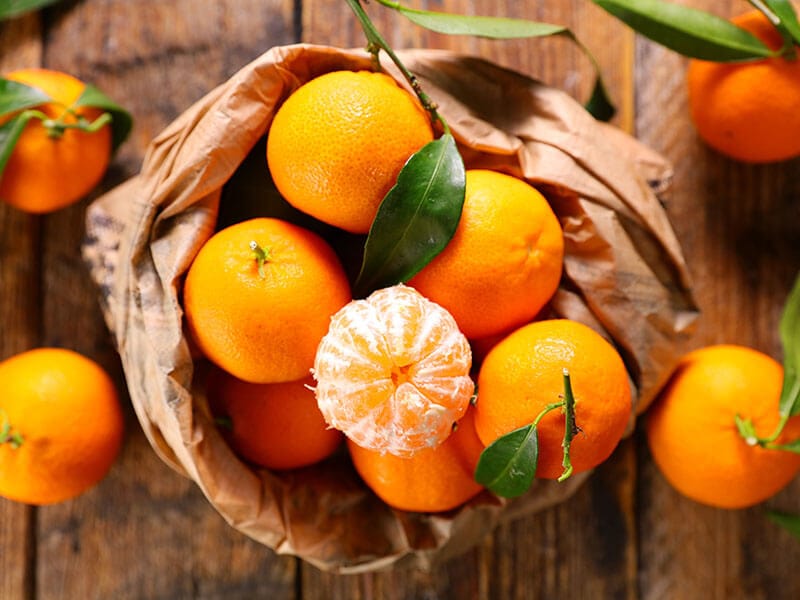
If you are a big fan of citrus fruit, you cannot neglect clementine. This fruit is a hybrid product between willow leaf mandarin orange and sweet orange. Its name comes from the name of a French missionary (Clement Rodier) who brought clementine to Algeria.
This fruit has 3 different types: Monreal (over 10 seeds), seedless clementines, and clementines (10 seeds). This fruit has an eye-catching appearance with glossy and dark orange skin. It contains about 7 to 14 succulent segments inside.
When you visit Corsica island, you have to taste Clementine de Corse. This common type looks small and has awesome smooth skin. In particular, its acidity will tickle your taste buds. It thrives well in the maritime climate regions.
After removing the rind, you can taste the sweet flavor of juicy fruit. Moreover, a bit of sourness will stimulate your taste buds immediately. The French often serve this fruit after each party as a fruit dessert.
In addition, due to the high water content of clementine, you can squeeze this fruit to get juice. You can bring the distinctive citrus fruit taste to many dishes by adding its juice or rind to them.
Nutrients: Plenty of calories, carbs, fiber, vitamin C, thiamine, and folate.
Season: The season of this fruit in France extends from late October to early January.
How to eat: Use your hand to peel the rind of this fruit and eat its segments. Remember to throw the seeds.
15. Grapefruit – Pamplemousse
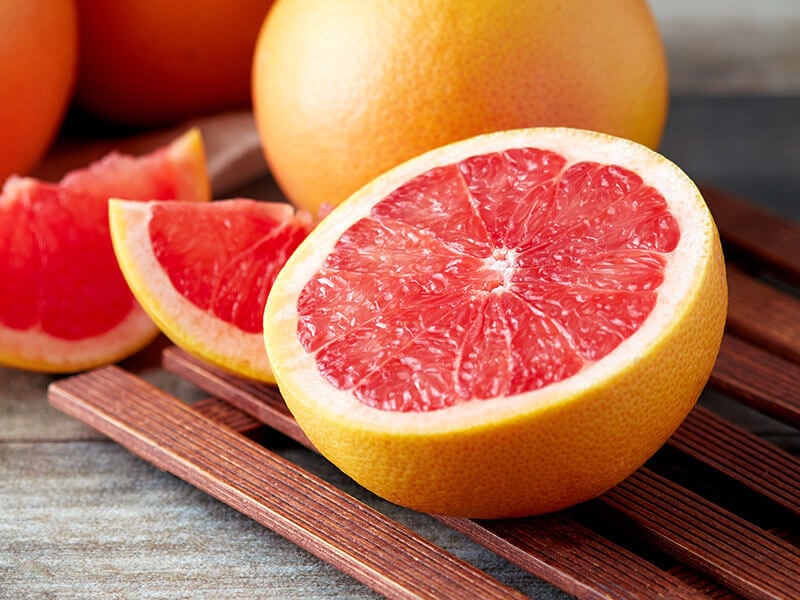
When referring to the yummy and exotic French fruits, I must mention grapefruit. This citrus fruit has its origin in Barbados. It is a mixed result between the sweet orange and the pomelo. This fruit spread to the world from Asia in the 17th century.
There are many similarities between this fruit and pomelo. You can be impressed by the oblate spheroid shape and the yellow-orange rind. You can find about 10 to 12 segments in each grapefruit, and its flesh is diverse in color.
Depending on the variety of grapefruit, the flesh can be pink, red, or white. Most grapefruits are sweet, but the red flesh version will be the most adorable. Furthermore, the hint of the distinctive tart flavor of citrus fruit is an indispensable part.
Grapefruit is a versatile choice because you can add it to many mouthwatering recipes besides eating raw fruit. The juicy flesh is an excellent option to make juice, desserts, or drinks. In addition, you will love the salads and savory dishes containing grapefruit.
Nutrients: A source of calories, protein, carbs, fiber, vitamin A, C, thiamine, and potassium.
Season: Grapefruit season in France is in February.
How to eat: To consume grapefruit, you need to peel the rind with a knife. Separate the segments and remove the thin film surrounding the flesh before eating.
Diversify Your French Fruit Menu With Other Outstanding Options
You cannot miss this part if you want to change your taste buds with other delicious French fruits. You will be addicted to their incredible taste.
16. Pear – Poire
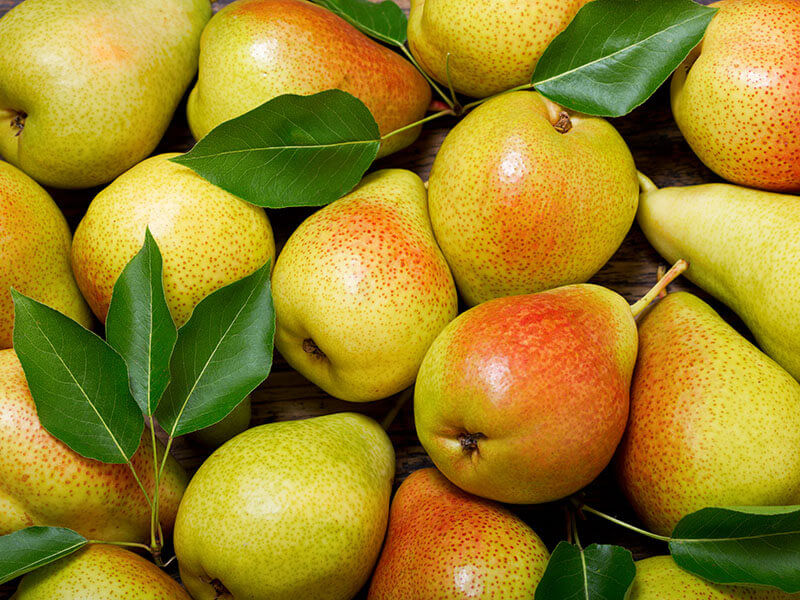
It would be a mistake if you forget to try pears when coming to France. This fruit is native to the coastal areas in Europe, Asia, and North Africa. There are about 3000 different types of pear globally. Anjou pear and Belle Angevine pear are the 2 popular types in France.
The Belle Angevine appeared in France in the 17th century. It is large, so you often see it on the ground before picking it up since it drops. When unripe, this type has green color, and it turns yellow and red when ripe.
Two centuries later, Anjou pear was grown in France. Compared to the Belle Angevine, this type is smaller and has the same shape like an egg. It looks fantastic in the light yellow or green hues. You will love the sweetness and soft texture of this fruit.
Pear is a common element in many tasty French recipes. You can poach, roast, grill, or use pears in baked foods. In terms of dessert, it is suitable for eating raw or making smoothies and juices.
Nutrients: Rich in carbs, fiber, calories, vitamin C, K, copper, and potassium.
Season: This fruit is common between August to October in France.
How to eat: Use a knife to remove the peel of the pear. Divide this fruit into small pieces to eat.
17. Juliet Apples
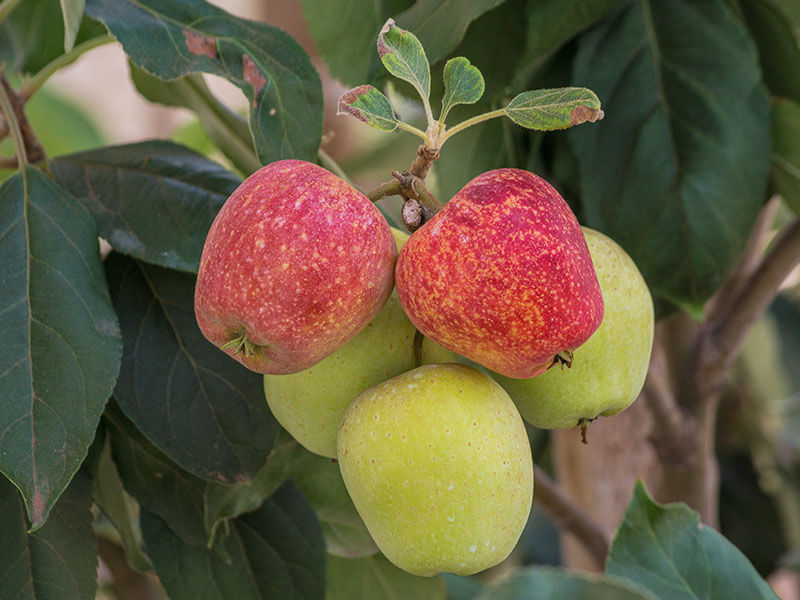
Apples are a famous fruit in many parts worldwide, so there is no surprise when this fruit plays an essential role in French cuisine. You can find many kinds of apples in France, but Juliet apples are the most common type.
This excellent fruit has its origin in France, and Juliet apples were sold on the market in the 1990s. You will love the medium size of these apples. In particular, the smooth and red skin of Juliet apples will leave a deep impression on your mind.
You cannot resist the outstanding flavor of Juliet apples. The sweetness will blend perfectly with the acidity to create a fantastic taste. You will immerse yourself in the juiciness and crispiness of these apples.
Juliet apples can last for a long time, allowing people to bring them to North America and Asia by shipping throughout the year. The French will consume raw apples, make juice, or cook many fantastic foods with these apples.
Nutrients: Rich in vitamin C, fiber, calories, protein, and calcium.
Season: This fruit is available from autumn to winter in France.
How to eat: Let’s peel the rind of apples before eating. Use a knife to slice it into bite-sized pieces to consume.
18. Calville Blanc Apple
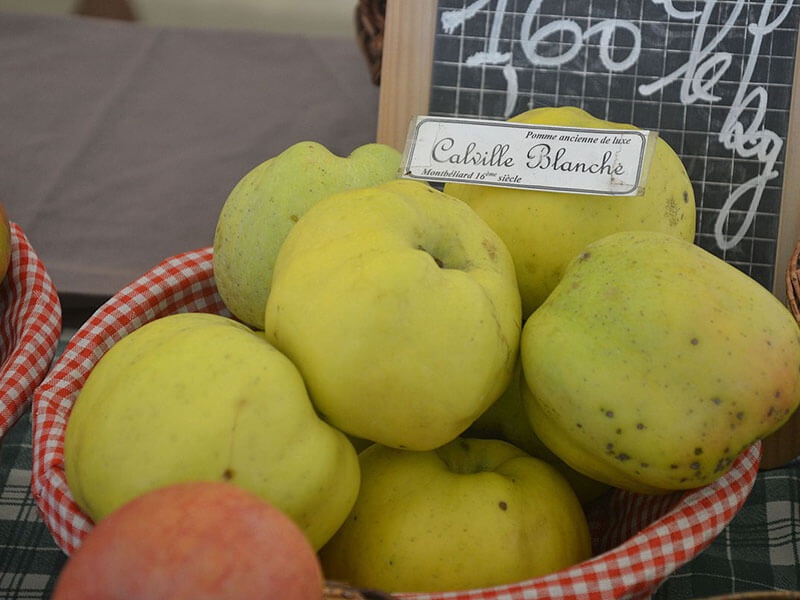
You can be confused with a type of wine when you hear its name, but this fruit is one of the most famous apples in France. It is a common choice for dessert in France. It is time to enjoy the soft texture of the pale yellow flesh of this apple.
In terms of fragrance, its aroma can remind you of bananas since they have many similarities. Compared to other common apples, its flavor is distinctive with its intense tartness, so the French do not consume it raw regularly.
In culinary, you will easily catch its flavor in cider, pies, vinegar, and many delicious French sauces. Significantly, the high vitamin C content will be good for your health. Its shade and taste will become warmer and better when stored well.
Nutrients: High in vitamin C, calories, carbs, potassium, and magnesium.
Season: Its season begins in late October and finishes in December in France.
How to eat: To use this apple, you need to peel its skin with a knife. Cut it into small pieces to squeeze the juice to add to many delicious dishes. Furthermore, you can consume it raw if you want.
19. Pineapple – Ananas
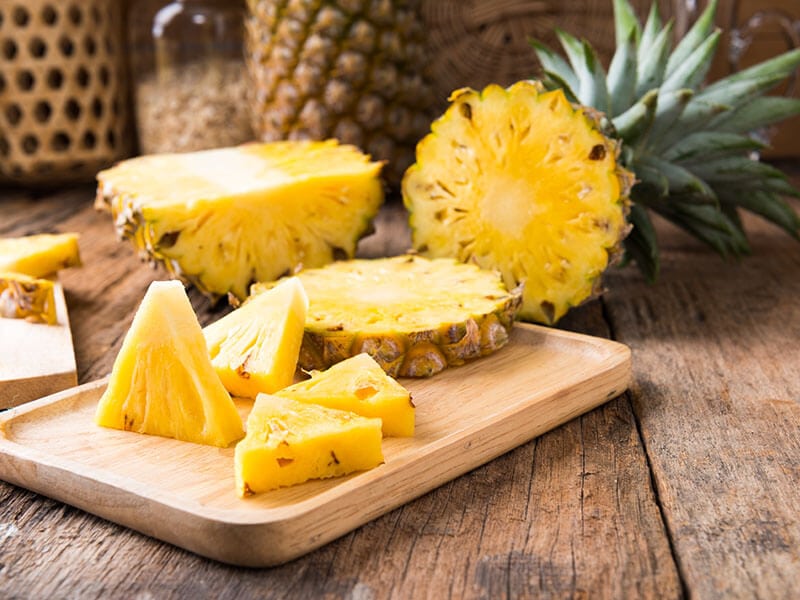
Pineapple is a tropical fruit that is sold in many regions globally. This fruit belongs to the Bromeliaceae family. It was derived in South America and cultivated in Europe in the 17th century. Until the 1820s, this fruit has become a commercial product of this continent.
This fruit has a characteristic appearance. You can imagine too many small eyes on the surface of its skin because there are many hexagonal units around the skin. Inside the tough rind, the succulent yellow or white flesh will passionate you.
I love the flavor of pineapple because it is incredible. The sweet taste of it will conquer you at the first bite. Furthermore, the tartness will tickle your palate and leave a profound aftertaste while consuming this fruit.
The French often consume fresh pineapple to refresh their mouth. In addition, the juicy texture is suitable for making juice and added to salads, cakes, ice cream, yogurt, and other desserts. You can mix it with many savory foods, such as chicken, ham, or seafood.
Nutrients: A source of calories, protein, carbs, fiber, and vitamin C.
Season: It is often ripe from October to April in this country.
How to eat: Peel the rind with a knife and cut the fruit into small pieces to eat quickly.
20. Strawberries – Fraises
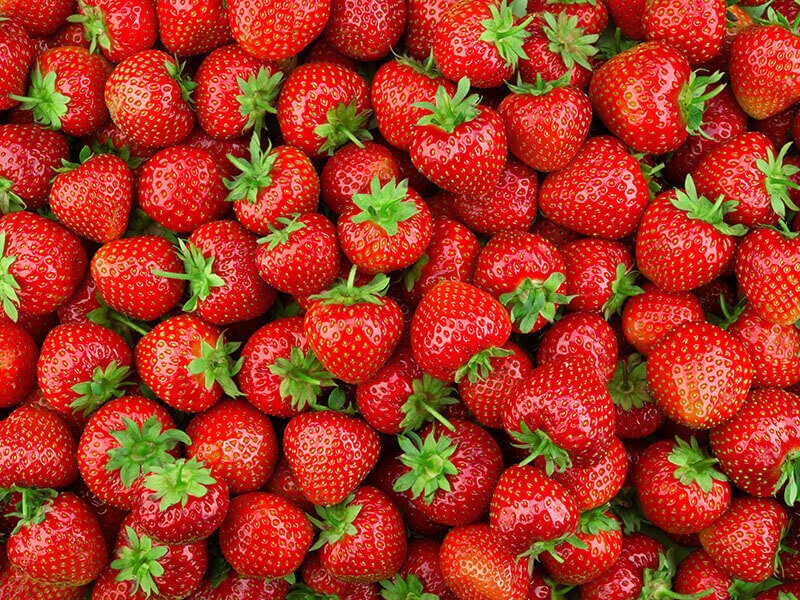
You can come across strawberries in many delicious foods in France. Strawberries are multiple fruits. It is a global fruit as its cultivation occurs widely in many regions worldwide. The first garden strawberry appeared in Brittany, France, in the 1750s.
The French started cultivating strawberries in the 14th century. Gradually, this fruit is grown in many other countries in Europe. Strawberries are small and look appealing in their bright red and glossy skin.
The outstanding fragrance of strawberries will make you want to try them immediately. The juicy, soft, and smooth texture of sweet strawberries will melt gradually in your mouth. People love to eat it as fresh fruit with cream or milk.
Strawberries are one of the fruits that are eaten the most in France. You can try the mouthwatering recipes from strawberries, such as juice, pies, ice cream, milkshakes, and jam. Moreover, it even appears in soap, candy, perfume, and lip gloss.
There are many different types of strawberry, and Fraise du Perigord is one of the most well-known types in France. This variety is common in the open fields in the Dordogne area of France. It has been grown in France since 1895.
Nutrients: High in vitamin C, folate, manganese, potassium, and iron.
Season: This fruit is common in France from early spring to late fall.
How to eat: Consume the whole fruit or cut it into slices to eat with milk and ice cream.
Go to the kitchen to make delicious Nutella stuffed strawberries baked French toast to consume.
21. Raspberries – Framboises
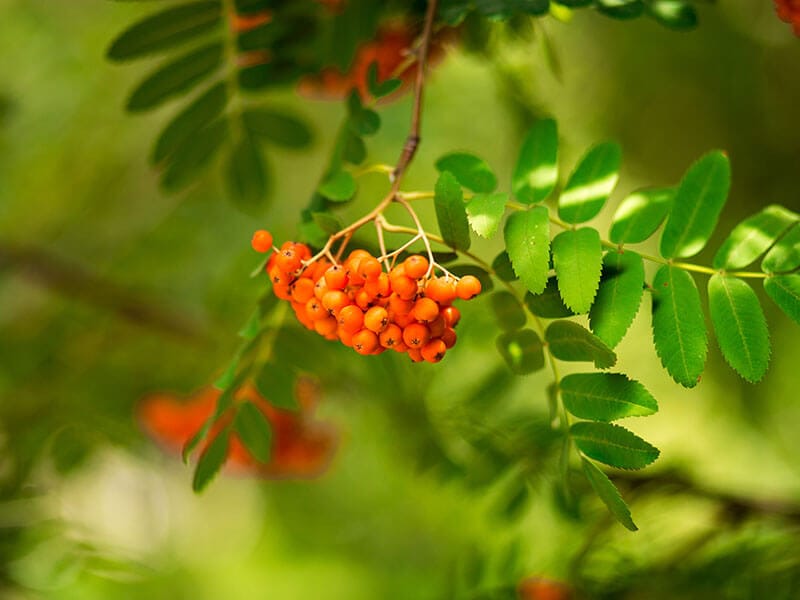
Among the various fruits in France, raspberries are the ideal choice to refresh your palate after a heavy meal. It is a member of the rose family. Its name comes from the “raspise” word, which means “a sweet rose-colored wine”.
You can enjoy plenty of raspberry types in various colors, from red to black. This fruit has a unique appearance with about 100 drupelets that attach. And each drupelet is created from a seed and a layer of succulent pulp.
In France, a well-known local market (La Framboisiere) sells many fresh and delicious raspberries. You will catch many raspberry trees planted in greenhouses in France.
Raspberries are a healthy fruit, and people usually use them to make smoothies, ice cream, pie, and other desserts. If you want to taste raspberries’ natural and fresh flavor, you should eat them raw.
Nutrients: It has vitamin A, B6, C, fiber, zinc, calcium, thiamine, and riboflavin.
Season: Its season lasts from mid-April to November in France.
How to eat: It is easy to eat the whole fruit after rinsing it with water.
It Is Time To Try These French Fruits!
France is a country with a long-standing culinary background, so fruits play a crucial role in many recipes of this country. Moreover, this country has suitable climate conditions to grow many kinds of fruit, making it a paradise for fruits.
Fruit is a diverse field, so please share any other excellent French fruits via comments if you know. To introduce this great list to many people, do not hesitate to share this post. Thanks for your time!
